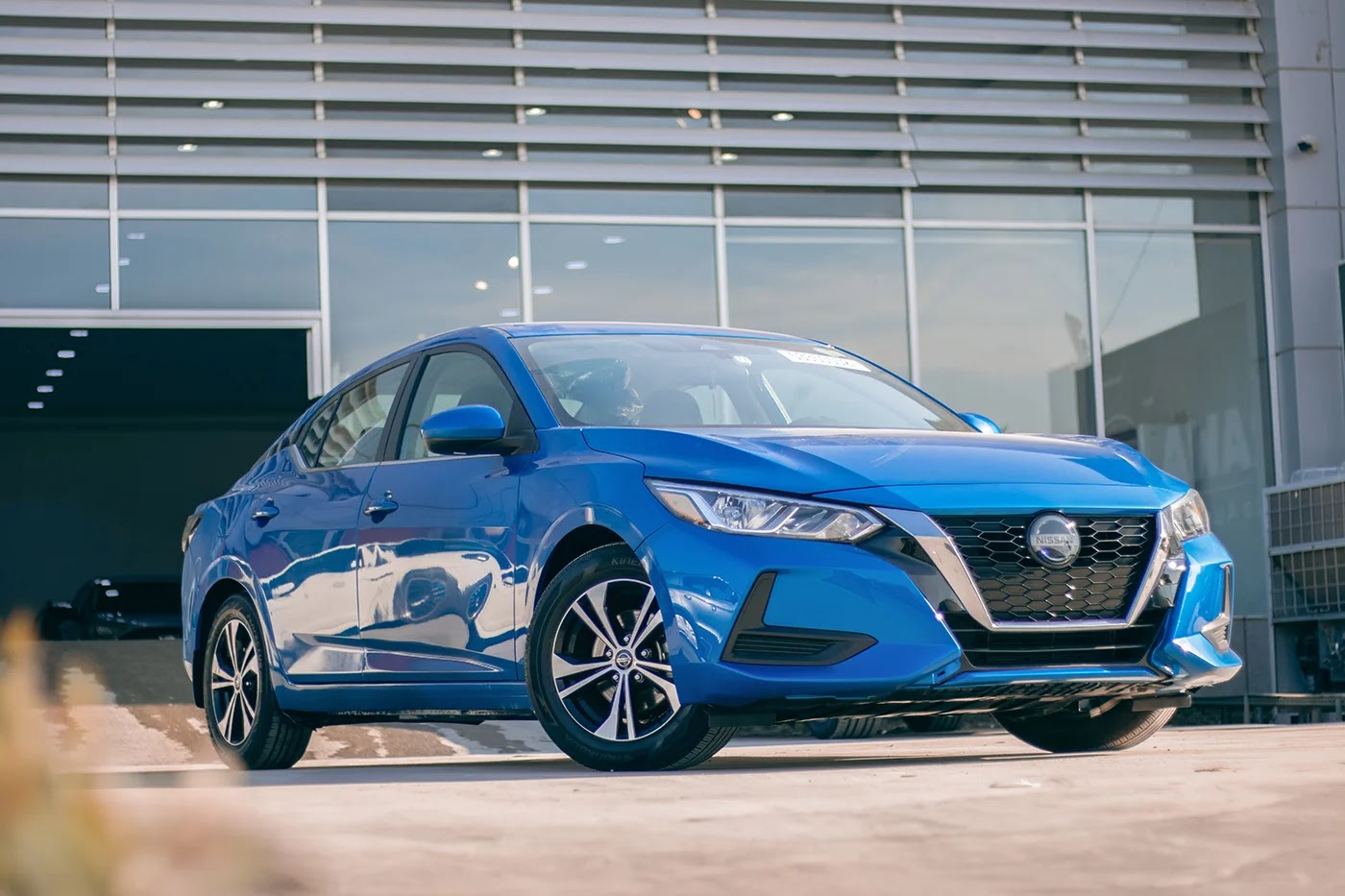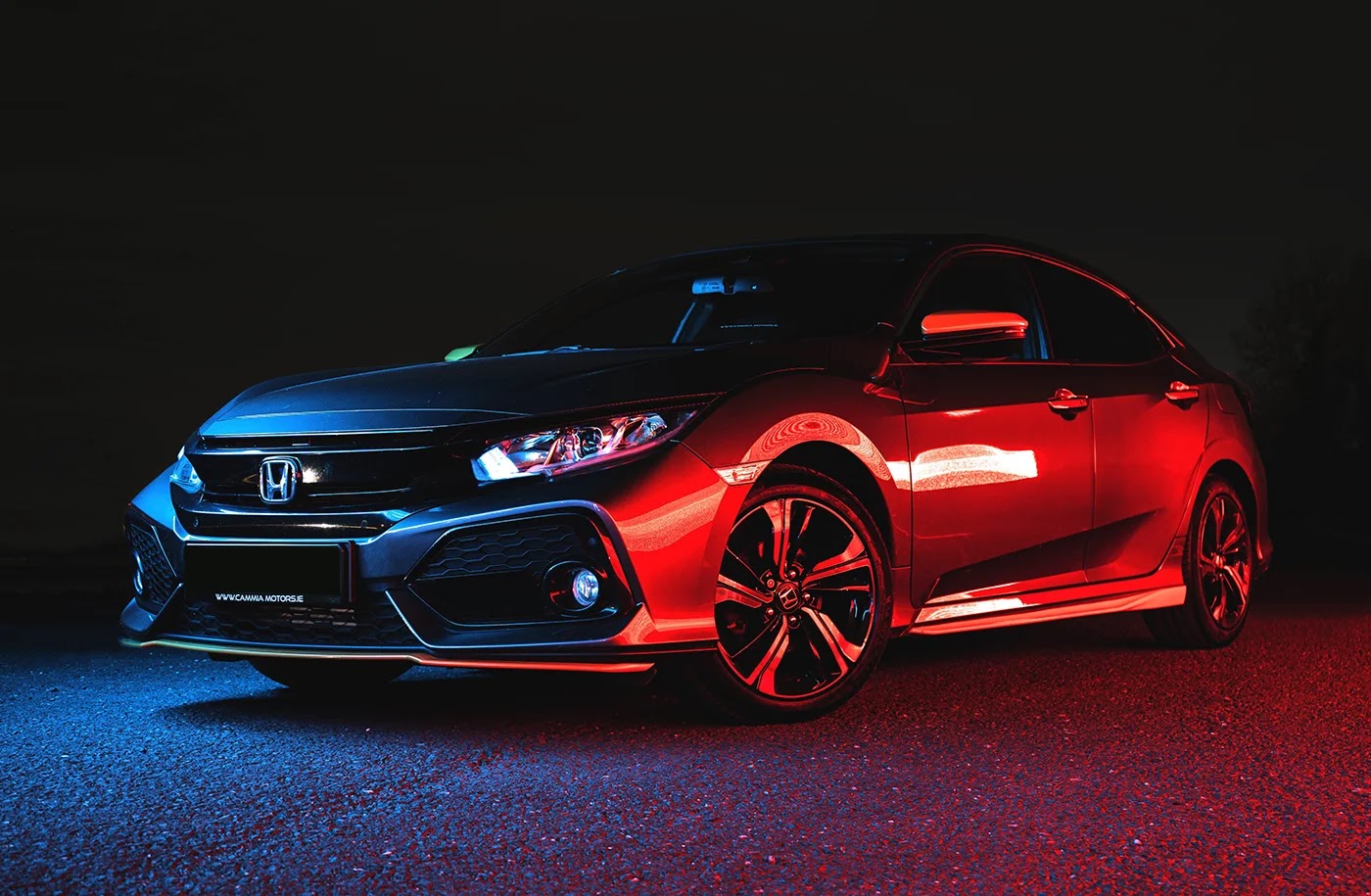The compact segment is fiercely competitive, requiring a delicate balance between quality and affordability to attract a wide audience. For years, Honda has excelled in this arena with its Civic, setting the benchmark for others to challenge. One such contender is the Nissan Sentra, boasting appealing aesthetics and a more affordable price range. In this article, we will conduct a head-to-head comparison of the Honda Civic and the Nissan Sentra, analyzing their features and capabilities.
On the other hand, the Nissan Sentra provides front seat passengers with 38.9 inches of headroom, 44.0 inches of legroom, and 53.5 inches of hip room. If you opt for a moonroof, the front headroom decreases to 37.5 inches. In the back, the Sentra offers 36.7 inches of headroom, 34.7 inches of legroom, and 53.5 inches of hip room.
Cabin Space: Finding the Perfect Fit
When it comes to cabin space, both the Honda Civic and the Nissan Sentra offer comfortable seating arrangements. In the front row of the Civic, you'll find 39.3 inches of headroom without a moonroof and 37.6 inches with it. The legroom measures at 42.3 inches, while the hip room comes in at 54.3 inches. Moving to the rear, the Civic offers 37.1 inches of headroom, 37.4 inches of legroom, and 48.9 inches of hip room.On the other hand, the Nissan Sentra provides front seat passengers with 38.9 inches of headroom, 44.0 inches of legroom, and 53.5 inches of hip room. If you opt for a moonroof, the front headroom decreases to 37.5 inches. In the back, the Sentra offers 36.7 inches of headroom, 34.7 inches of legroom, and 53.5 inches of hip room.
Ultimately, both vehicles have their strengths and weaknesses in terms of cabin space. The Civic excels in rear headroom and legroom, while the Sentra offers more hip room in the back and additional legroom in the front row.
Powertrains: Performance at Your Fingertips
When it comes to powertrains, the Honda Civic offers a range of options to suit different preferences. The LX and Sport models come equipped with a 2.0-liter 4-cylinder engine, delivering 158 horsepower and 138 lb-ft of torque. These models are paired with a CVT transmission. The EX/EX-L and Touring/Sport Touring trims, on the other hand, feature a 1.5-liter 4-cylinder turbo engine, producing 180 horsepower and 177 lb-ft of torque.The sedan range utilizes a CVT, while the hatchbacks in Sport or Sport Touring trim offer a 6-speed manual transmission. The Civic Si takes performance up a notch with a slightly uprated 1.5-liter 4-cylinder turbo engine, generating 200 horsepower and 192 lb-ft of torque, paired with a 6-speed manual and rev-matching.
In contrast, the Nissan Sentra offers a single powertrain option. Across the Sentra lineup, you'll find a 2.0-liter 4-cylinder engine delivering 149 horsepower and 146 lb-ft of torque, mated to an Xtronic CVT transmission.
In contrast, the Nissan Sentra offers a single powertrain option. Across the Sentra lineup, you'll find a 2.0-liter 4-cylinder engine delivering 149 horsepower and 146 lb-ft of torque, mated to an Xtronic CVT transmission.
While the Civic offers a range of powertrain options, allowing drivers to choose their preferred level of performance, the Sentra keeps it simple with a single engine choice.

Fuel Economy: Maximizing Efficiency
For those seeking optimal fuel efficiency, the Honda Civic offers several configurations to consider. The EX/EX-L trim with the 1.5-liter engine and LL-CVT delivers impressive mileage of 33/42/36 MPG (7.1/5.6/6.5 L/100km) in sedan form and 31/39/35 MPG (7.6/6.0/6.7 L/100km) in hatchback form. However, the lower trim 2.0-liter engine achieves slightly lower fuel economy numbers.
In terms of fuel efficiency, the Nissan Sentra holds its ground. The 2.0-liter engine paired with a CVT transmission achieves 29/39/33 MPG (8.1/6.0/7.1 L/100km) in S and SV trims and 28/37/32 MPG (8.4/6.4/7.4 L/100km) in the SR trim.
While the Sentra offers marginally better mileage than the sportier Civic Si, it falls behind in terms of horsepower. When compared to the 2.0-liter equivalents from Honda, the fuel economy numbers for the Sentra are comparable.
Cargo and Towing: Making Space for Your Needs
When it comes to cargo space, the Honda Civic offers various options depending on the trim level. The LX, Sport, and EX trims of the Civic Sedan provide a maximum cargo capacity of 14.8 cubic feet, while the Touring and all Si models have a slightly reduced capacity of 14.4 cubic feet due to the presence of a subwoofer. The Civic Hatchback trims offer a more spacious cargo area, with up to 24.5 cubic feet of storage space behind the seats.In comparison, the Nissan Sentra features a trunk with a capacity of 14.3 cubic feet, providing ample space for your belongings. However, it is not rated for towing.
In terms of cargo capacity, the Civic outshines the Sentra, offering a larger trunk even in its smallest configuration.
Safety: Prioritizing Your Well-Being
Both the Honda Civic and the Nissan Sentra prioritize safety, equipping their vehicles with advanced safety features. The Civic comes standard with the Honda Sensing Safety suite, which includes Collision Mitigation Braking System, Road Departure Mitigation System, Lane Keeping Assist, Lane Departure, and Traffic Sign Recognition. Depending on the trim level, additional safety features such as Blind Spot Information System and Cross Traffic Monitor are available. The Sentra also offers a comprehensive suite of safety technologies, including Forward Collision Warning, Automatic Emergency Braking with Pedestrian Detection, Lane Departure Warning, Rear Automatic Braking, Rear Cross Traffic Alert, Blind Spot Warning, and Rear Sonar.While the Civic includes Blind Spot alerts and Cross Traffic information on higher trims, the Sentra offers these features even on its most basic trim level. In terms of safety, the Sentra provides slightly more advanced safety technology at a lower price point.
Technology and Features: Enhancing Your Driving Experience
Both the Honda Civic and the Nissan Sentra offer a range of tech and features to enhance your driving experience. The Civic LX and Sport models come with a 160-watt sound system, a 7-inch touchscreen with Apple CarPlay and Android Auto integration, and automatic climate control. The EX/EX-L trims and Sport Touring models offer additional features such as dual-zone climate control, heated front seats, an upgraded 8-speaker sound system, and wireless phone charging. The range-topping Touring and Sport Touring models provide power-adjustable seats, leather seating, wireless CarPlay/Android Auto, a larger infotainment screen, and a premium Bose 12-speaker sound system.In comparison, the Nissan Sentra offers a simplified and cost-effective approach to features. Even the base S model comes standard with a 7-inch touchscreen, Apple CarPlay, and Android Auto. The SV trim offers an 8-inch infotainment screen, with optional packages adding features such as dual-zone climate control, heated front seats, a power-adjustable driver's seat, leather seating surfaces, and a moonroof. The SR trim enhances the exterior aesthetics with larger 18-inch wheels and offers an optional Premium Package with additional luxury features.
While the Civic offers a more extensive list of tech and features, the Sentra provides a compelling package at a lower price point.
Styling: Striking a Balance Between Modernity and Elegance
In terms of styling, the Honda Civic and the Nissan Sentra offer distinct visual identities. The 2022 Civic features a more reserved design compared to its predecessor, moving away from sharp angles and opting for a more conventional shape. The boomerang tail lights have been replaced with horizontal units resembling those found on the Volkswagen Jetta. The black grille has been integrated into the front bumper, creating a sleeker appearance.On the other hand, the Nissan Sentra underwent a redesign in 2020, resulting in a modern and attractive vehicle that stands out from the crowd. The prominent Nissan "V" grille gives the Sentra a distinctive presence on the road. Furthermore, the SR trim offers the option of the Midnight Edition package, which adds blacked-out trim elements to enhance its aesthetics.
While the Civic's new design may be perceived as more subdued compared to its predecessor, the Sentra's edgier look provides a bolder visual statement.
Pricing: Finding the Right Balance Between Value and Features
Pricing plays a crucial role in the decision-making process when it comes to purchasing a compact car. The Honda Civic starts at $23,645 (including $1,095 destination charge) for the LX sedan. The Sport, EX, and Touring trims are priced at $25,045, $26,645, and $30,245, respectively. For those interested in the functionality of a hatchback, the Civic Hatchback ranges from $24,645 for the LX trim to $31,145 for the Sport Touring trim. The performance-oriented Civic Si starts at $28,595, with an optional $200 upgrade for performance-oriented summer tires.In comparison, the Nissan Sentra offers a more affordable starting price of $20,835 (including $1,025 destination charge) for the entry-level S model. The SV trim begins at $21,895, with the option to add packages such as the Premium Package for $1,860 or the All-Weather Package for $590. The Sentra SR starts at $23,425, with an optional Premium Package priced at $2,470.
While the Civic offers a wider range of features and trim levels, the Sentra provides a more cost-effective option, delivering excellent value for the price.
Verdict: Making the Right Choice for You
In conclusion, both the Honda Civic and the Nissan Sentra have their merits, making it essential to consider your specific needs and preferences. The Civic has established itself as the benchmark in the compact car segment, offering a versatile range of options to suit different driving styles and requirements. Whether you prioritize performance, fuel efficiency, or cargo space, the Civic has a configuration that will meet your needs. On the other hand, the Sentra offers an attractive package at a more affordable price point, providing a comfortable and safe driving experience.Ultimately, choosing between the Honda Civic and the Nissan Sentra depends on your priorities and budget. The Civic offers a more extensive list of features and trim levels, allowing for a more personalized experience, while the Sentra provides excellent value for the price. Consider your preferences, take each car for a test drive, and make an informed decision based on what matters most to you.

